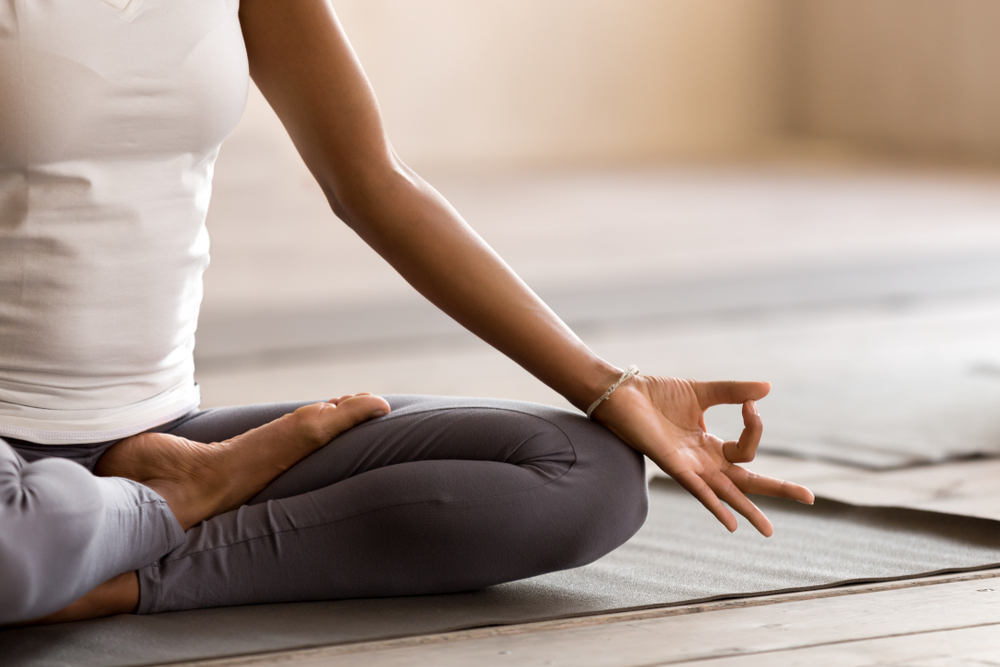How To Prepare for a Marathon: 10 Effective Training Activities
- Swimming
- Hiking
- Climbing
- Yoga and Pilates
- Meditation
- Strength training
- Cycling
- Rowing
- High-Intensity Interval Training (HIIT)
- Cross-training
- The Importance of Training for a Marathon
- Final thoughts
It is no secret that running a marathon is hard work. It takes months of dedication and strict training to be able to confidently take on the 26.2 mile challenge, whether running or walking!
When planning your marathon training schedule, logging miles shouldn't be your only priority. Take into consideration different activities you can include to get your body and mind ready, such as swimming, yoga, meditation, strength training, cycling, and cross-training.
In this latest blog, as part of our ongoing marathon series, we’ll be sharing all our best tips for how to prepare for a marathon. Let's look at some of the best alternative activities you can do to prepare your body for long distance running.

1. Swimming
Working out in the pool is a great way to enhance your training regimen for marathon. It’s a low-impact cardiovascular exercise that improves endurance, strengthens muscles, and enhances lung capacity. It provides a full-body workout while reducing stress on the joints, making it an ideal cross-training activity for marathon runners.
Swimming enables you to improve the stamina and oxygen regulation you need for long distance sports outside of the water, without exerting as much force on your body.
For resistance training and strength training for both small and big muscle groups, try pool running sessions or aqua jogging. To strengthen your heart and optimise your lung capacity, swim lengths and alternate between strokes, such as breaststroke and freestyle.
Swimming also makes a great activity to include in your post-marathon recovery, as it promotes blood circulation and helps to reduce muscle soreness.

2. Hiking
Hiking builds endurance, strengthens leg muscles and knees, and improves cardiovascular fitness, all in one, making it an excellent complement to your marathon training plan.
Unlike running, walking is a low impact activity, meaning it is far less likely to cause you injury before the day of your marathon. If you are right at the beginning of your training journey, it may be beneficial for you to start with low impact activities, to build up your fitness level before taking on any long distance running challenges.
It's important to choose hiking trails and routes that match your fitness level and training goals, gradually increasing intensity and duration as your fitness improves.
3. Climbing
Climbing challenges upper body strength, grip strength, and overall body and mind coordination — it’s like solving a vertical puzzle with your body. For these reasons, it is definitely a beneficial activity to include in your marathon training plan.
It strengthens key stabilisation muscles that may not be targeted during running, improves balance and agility through strengthening your core, and enhances mental focus (which you’ll definitely need to complete a marathon).
Climbing also provides a fun and engaging workout that can break up the routine of running and other traditional training activities, to keep you engaged in your fitness journey. In fact, you’ll find that many climbers are also runners, the two seem to exist symbiotically.
4. Yoga and Pilates
Some of the best forms of exercise you can include in your marathon training, as well as your post-marathon recovery, are yoga and pilates.
Both of these exercises encompass strengthening and stretching - two essential components of any marathon training.
Yoga and pilates can also help relieve stress in the muscles, improve your range of motion, enhance muscular control in key areas such as the hip flexors, build core strength, and boost mental focus.
You can even partake in these exercises

5. Meditation
Similar to yoga, using a quick meditation technique for mindfulness can change your life completely.
As well as bringing you calmness and serenity, it releases your stress and worries. Mindfulness techniques bring you to the present moment and offer you the inner peace and clarity you need to overcome your obstacles.
Marathon training requires sustained focus and mental clarity, which can be difficult to maintain when taking on such a physically and mentally demanding challenge. It can be easy to feel deflated when training sessions don't go as well as you'd hoped, or you don't feel ready.
Taking up meditation teaches us to let go of these thoughts so that they do not interfere with our training. As the day of your marathon gets closer, meditation can be the key to keeping you determined and focused.
6. Strength training
Marathon training for beginners tends to encompass a lot of cardio and aerobic exercises. However, you should also focus on strength training and muscle building as part of your marathon training plan.
Strength training targets key muscle groups such as the core, glutes, hips, and legs, improving running efficiency, stability, and power.
You don’t necessarily have to use any weights or practice heavy lifting; you can simply use your bodyweight to build muscle. Try some basic moves like jump squats, push-ups, walking lunges and burpees.
If you’re looking for a mix between strength training and cardio, you may find a fitness regime like CrossFit very appealing.
7. Cycling
Cycling provides a low-impact cardiovascular workout that improves aerobic capacity, leg strength, and endurance. It is the ideal activity for if you’re not keen on the gym, and would instead prefer to strengthen your lower body muscles and enjoy the outdoors.
Spinning and cycling can improve your quads, hamstrings, and glutes - some of the most vital muscles for long-distance runs.
It also offers a break from the repetitive stress of running while still providing a challenging workout. Having this variety can make training more enjoyable and keep you on track to achieve your goals.
8. Rowing
Rowing is a full-body workout that strengthens muscles in the arms, back, core, and legs. This will assist in improving overall cardiovascular fitness and muscular endurance pre-marathon.
Regular rowing as part of your training and ongoing fitness also improves posture, balance, and coordination, enhancing overall athletic performance.
9. High-Intensity Interval Training (HIIT)
HIIT workouts involve alternating between short bursts of high-intensity exercise and periods of rest or low-intensity activity.
They improve aerobic capacity, leading to better overall performance in long-distance running. HIIT also increases calorie burn, boosts metabolism, and promotes fat loss, making it an effective complement to your marathon training.
10. Cross-training
A bit more of a generic term to the rest, cross-training for marathon runners refers to taking part in any activity other than running, to improve your overall fitness. The popularity around cross-training and its benefits has increased significantly in recent years and for good reason, too.
We covered some of the best cross-training activities above, including swimming, climbing, strength training, cycling, and rowing. There are plenty of other cross-training activities you could get involved in as part of your marathon training. Many of these activities and sports are enjoyable and don't feel like exercise when compared to running — which is a bonus!
Benefits of Cross-Training
You’re now probably wondering how participating in other non-relatable activities will help you prepare for that gruelling 26.2 mile run you’re training for?
Some of the benefits of introducing cross-training into your training programme include:
- Variety — it will keep your training fresh and enjoyable
- Substitution — cross-training brings more benefits to your ‘easy day’ activity
- Injury prevention — by taking part in other activities, you’re using and strengthening other muscle groups and the connective soft tissue, which will benefit you when your training is at its hardest and reduce the risk of injury.
Keeping lean — cross-training is a great additional way of burning fat
The Importance of Training for a Marathon
Running a marathon without training can risk injury and ruin your chances of participating in future races. The more miles you run, the more impact the soles of your feet endure, so much so, that you could even develop a foot condition such as plantar fasciitis.
However, you can protect your feet by using specialised sports insoles, such as our FootActive Sports, FootActive UltraLite or FootActive Performance insoles. A good pair of shoes will also prove invaluable during your training and on the day of the marathon.
Final thoughts
The best marathon training isn’t just about physical activity, it’s also about healthy eating, staying hydrated, and improving your marathon mental toughness. However, we hope this guide has given you some great ideas on how to prepare for a marathon and improve your fitness and mental wellbeing, without restricting yourself to just running.
It’s important to note that successful and sensible runners will consider all the above rather than simply focusing on running as many miles as possible. It’s vital to cross the finish line safely, but above all, remember to enjoy every step of the ride.
If you have any further questions or need some more advice on foot care for marathon running, please don’t hesitate to contact us. And most of all — good luck!
This blog is also part of a wider series about marathon training tips, injury prevention, and post-marathon recovery, which you can check out below:
-
- Marathon Preparation: 4 Tips On What Not to Do
- Marathon Injury Prevention: Everything You Need To Know
- Post-marathon Recovery: How To Look After Your Body
- The Dangers of Not Taking Care of Minor Injuries Properly
- 6 Top Tips for Preparing a Walking Marathon
- The Pitfalls of Running a Marathon without Training




